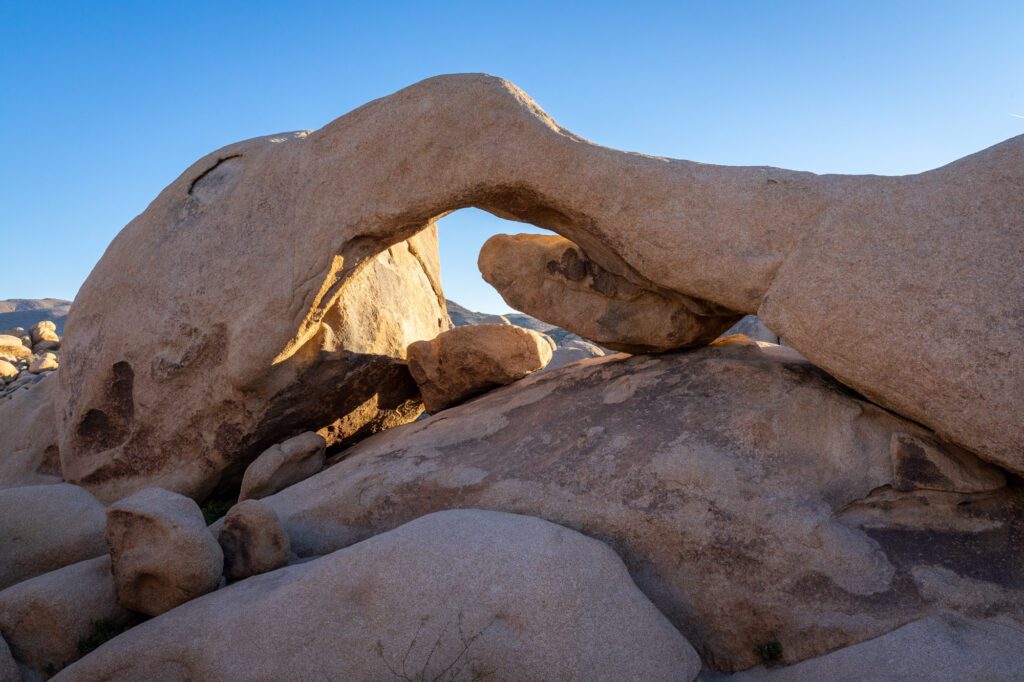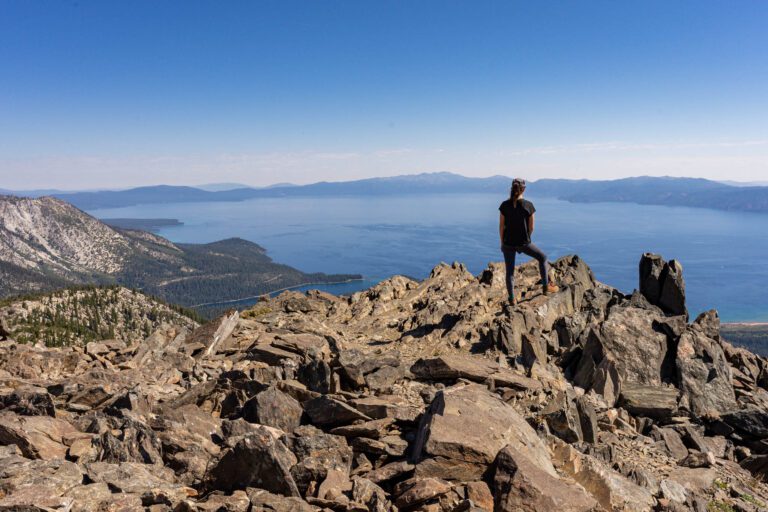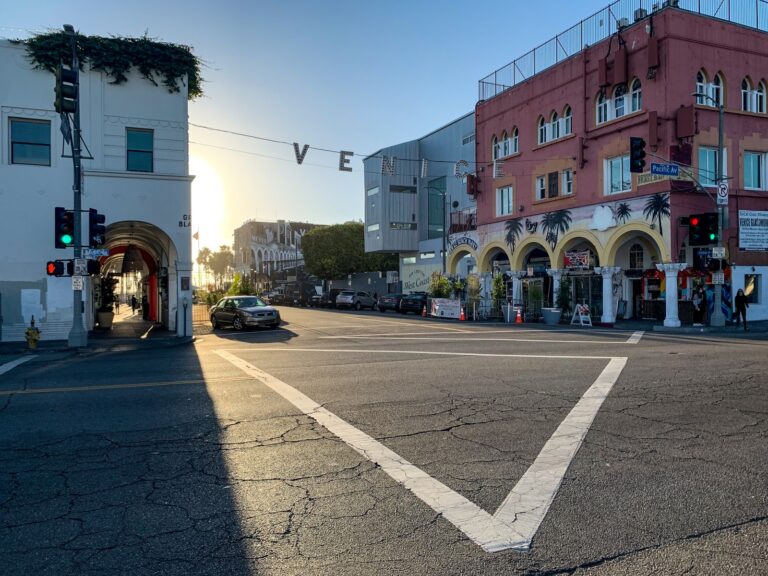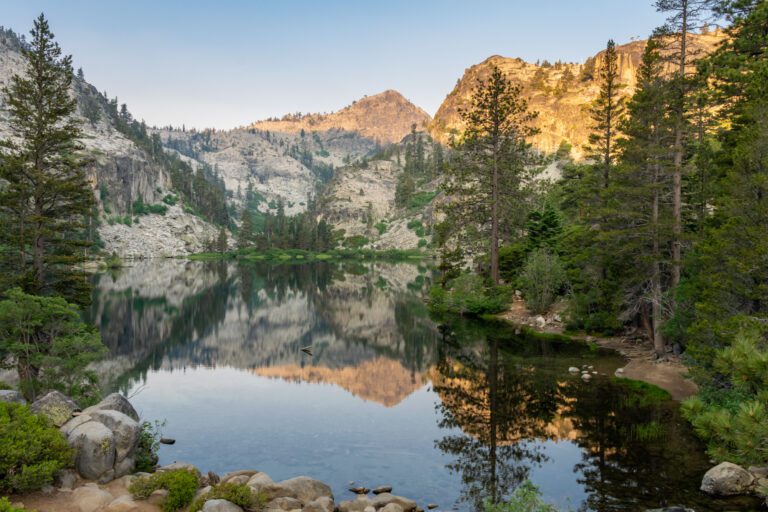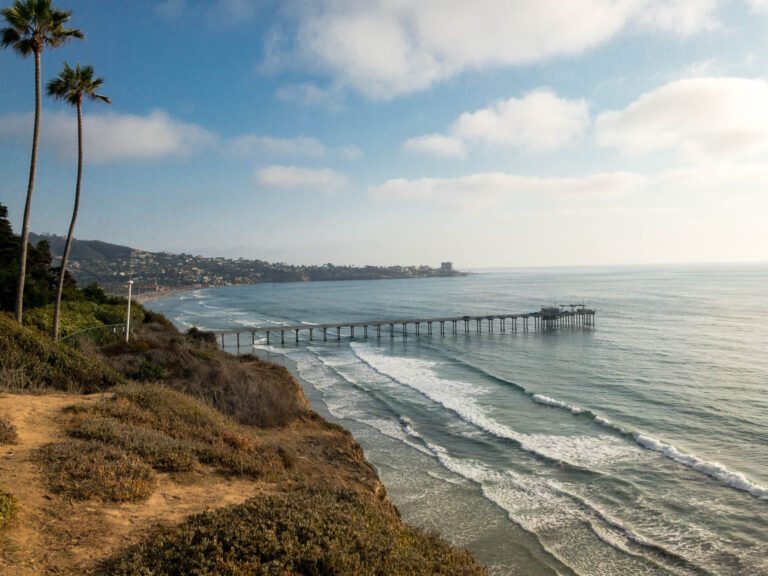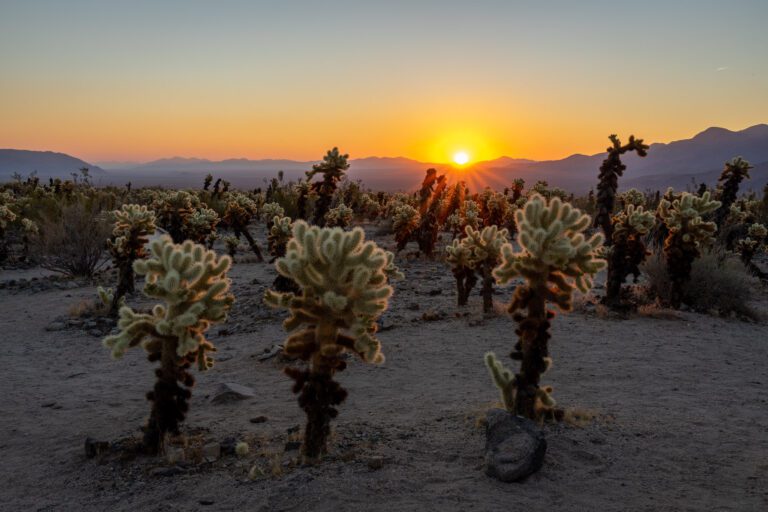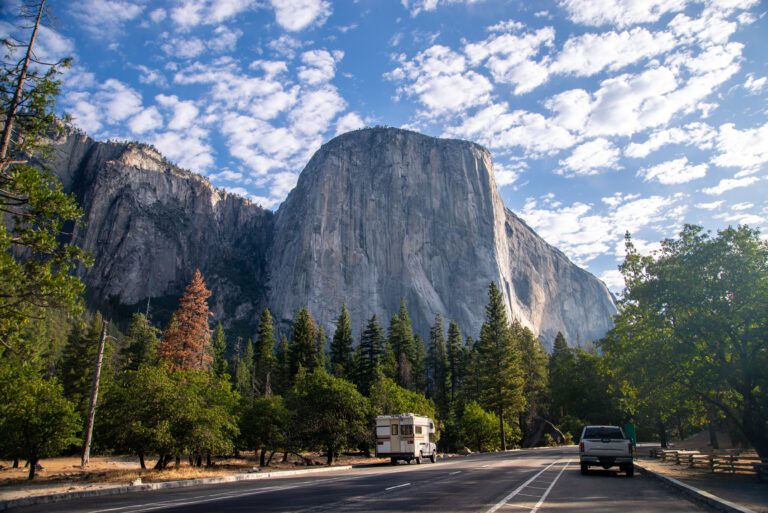The Best Time to Visit Joshua Tree National Park
Joshua Tree always has something to offer, but there are definitely some times that are better to visit than others. While the landscape doesn’t change drastically from season to season, in the many times that I’ve visited, I’ve found that there are some major pros and cons of visiting during different times of the year.
The park is open year-round, which means you can make a trip whenever you’d like – but when is truly the best time to visit Joshua Tree?
I’m Kyra, a California native who has spent her fair share of time in and around the park, so I’m here to help! We’ll dive into the details of visiting during every season.
Disclaimer: Some of the links in this post, like hotel and vacation rental links, are affiliate links, meaning at no additional cost to you we make a little bit of money if you click through and book. That being said, we would absolutely never recommend something to you that we don’t stand behind 100%.
What is the Best Time to Visit Joshua Tree National Park?
If you’re trying to figure out exactly when to visit Joshua Tree, here is my breakdown of everything you need to know about visiting in each season.
We’re going to keep this short and sweet, and give you the best times to visit first, and then some other times to visit and the implications of planning your trip for those less desirable times.
Spring in Joshua Tree: The Most Popular Time to Visit Joshua Tree
Spring is considered to be the absolute best time to visit Joshua Tree, since the weather is so nice. The early spring is especially perfect, because the average daytime temperatures are typically in the 70s. During the night, the temperatures tend to drop down to the 40s.
It gets hotter in May, with average temperatures hovering around the mid 80s. While this is definitely warmer, it’s still bearable. At night, the temperatures are typically in the 50s.
Besides the perfect weather, another reason why the spring is the best time of year to visit Joshua Tree is the desert wildflowers. Some beautiful flowers start to bloom in February, March, and April, so there’s plenty to see throughout the season.
Of course, with great weather comes massive crowds. Spring is the most popular time to visit, and you can always expect the weekends to be packed. This means that getting in and out of the park can take some time, and you may also have a hard time finding parking at certain destinations. Accommodations also book up fast.
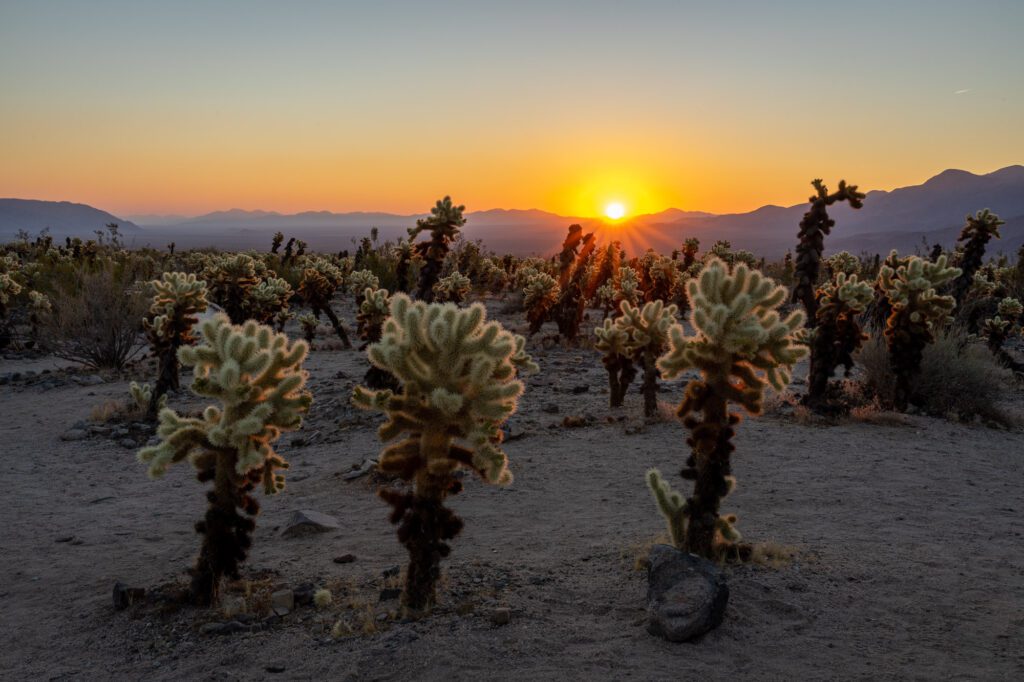
What to Keep in Mind When Planning a Spring Visit
If possible, I highly recommend visiting during the middle of the week (rather than on a weekend) to avoid crowds as much as possible. It’s also smart to enter the park well before 10:00am to skip long lines getting into the park. Beyond that, there are a few special events and dates when you can expect even greater crowds in the park.
In April, there’s a free admission day for National Park Week on the third Saturday of the month. If you want to take advantage of a free admission day, this is not the time to do it! It’s already busy enough, and if you visit on this free day (that’s also on a weekend!), you’re going to run into lots of people.
Keep in mind that the Coachella Music Festival (which is held in Indio, about an hour from the park) happens over two weekends in mid/late April. This is followed by Stagecoach Music Festival (held in the same location), which happens the weekend after Coachella’s second weekend.
While these festivals don’t greatly impact crowds at the park itself, you may hit some traffic on your drive over to the park.
You should also note that the spring version of the four-day Joshua Tree Music Festival is held around the middle of May.
Fall in Joshua Tree: Best Combination of Weather and Crowds
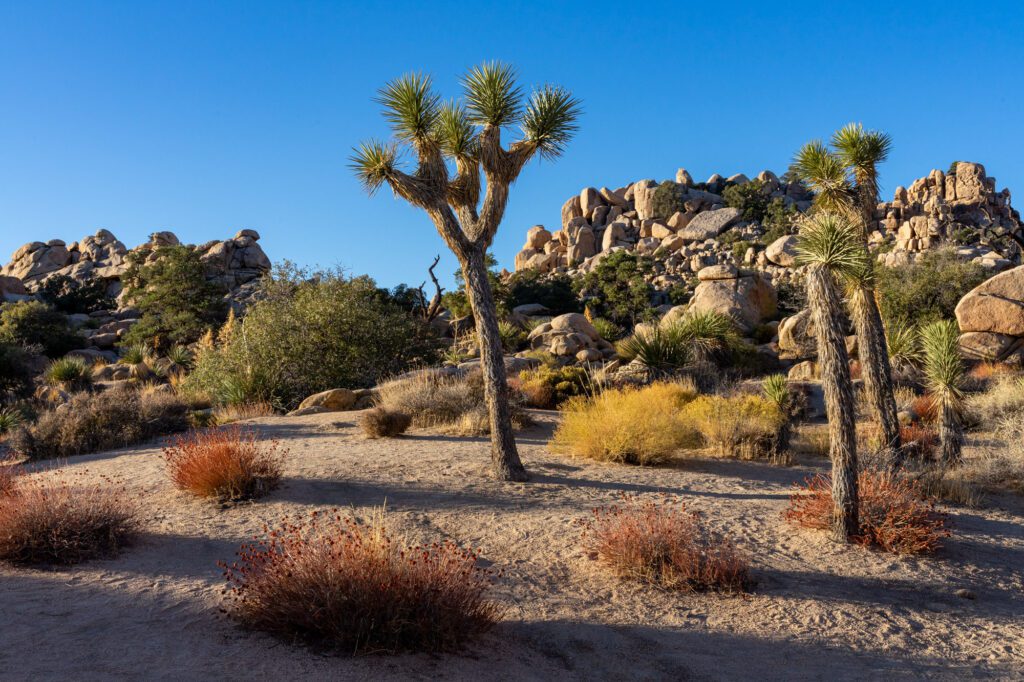
The hot weather typically continues into September, but the later fall is a really nice time to visit. In October, the daytime average temperatures tend to be around the low 80s, and in November, those numbers drop into the high 60s. This cooler weather makes it much safer to hike and explore the park during the day.
One very important thing to note is that it does get chilly at night, so you’ll want to bring layers! October sees average lows around the low 50s, and that goes down to the low 40s in November.
As the temperatures drop to more bearable levels, the crowd levels start to increase, so you certainly won’t have the park to yourself. That said, while it definitely gets busy, it’s still not quite as crowded as it gets in the spring (with a few exceptions that we’ll talk about in a minute). This ultimately is what makes the fall the best time to go to Joshua Tree – you’ll have mild weather that’s great for hiking, and generally won’t see the biggest influx of crowds.
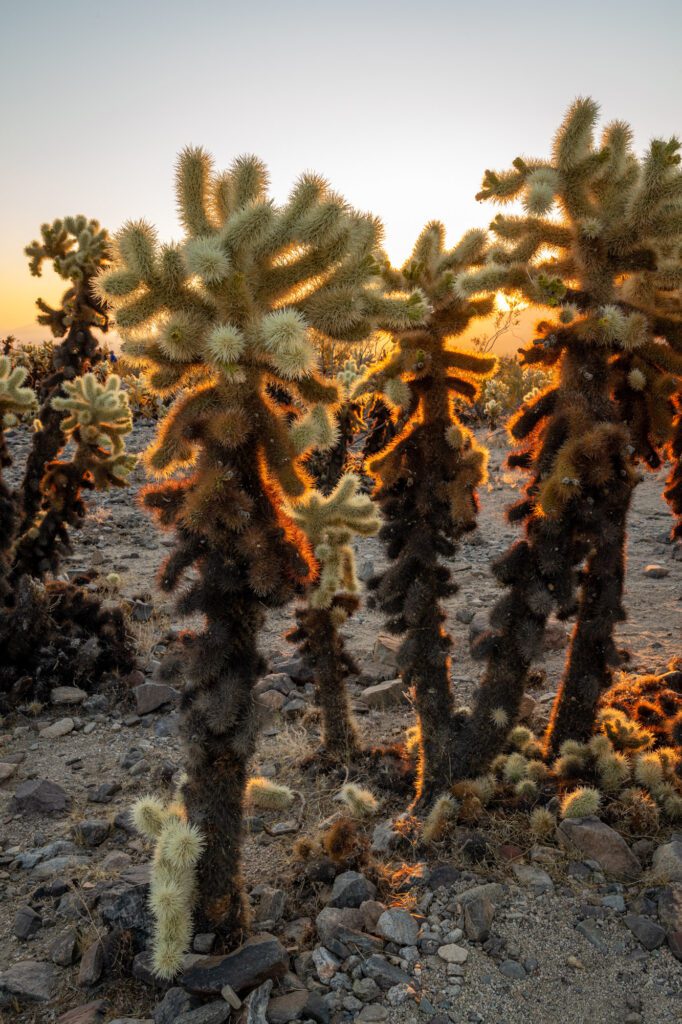
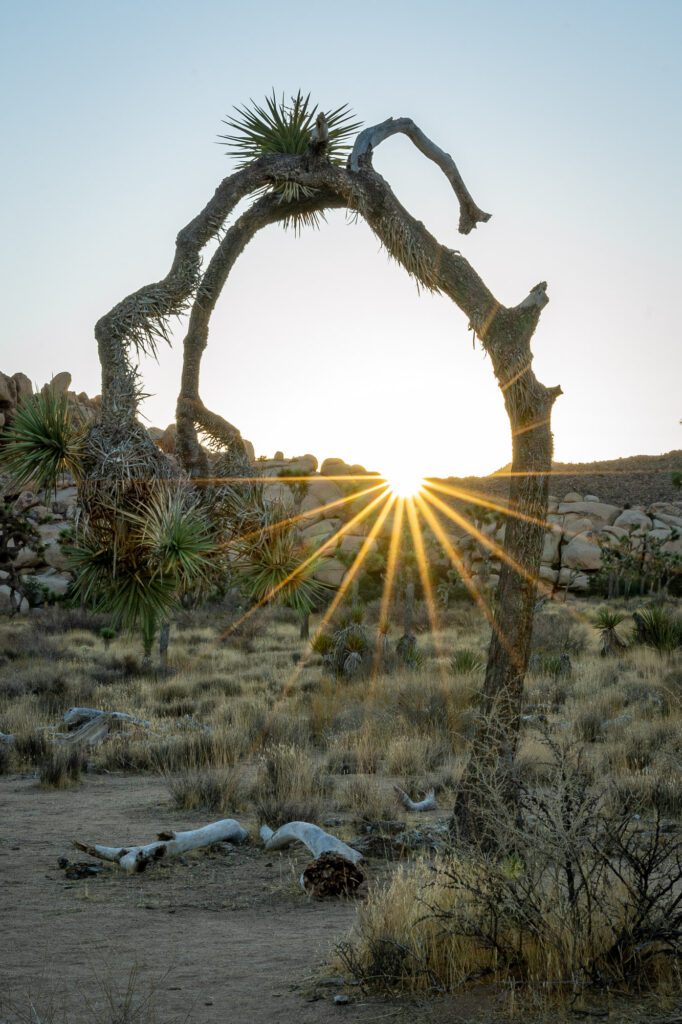
What to Keep in Mind When Planning a Fall Visit
The tricky thing about visiting in the fall is that there are a few special events and important dates that you have to navigate. For the sake of avoiding the biggest crowds of the season, you may not want to visit during these times.
The biggest special event to note is the four-day Joshua Tree Musical Festival, which happens twice a year at a location that’s just about a 20-minute drive outside of the park. The fall festival typically happens around early/mid-October.
During this time, the park usually gets more crowded with festival-goers, and hotels, rentals, and campgrounds will book up more quickly. You may also experience increased traffic levels when making your way to the area. Be sure to check the website for the exact dates when planning your trip.
There are also two dates in the fall when there are free entrance days for all national parks: the 4th Saturday in September (for National Public Lands Day) and November 11th (for Veterans Day).
While you can certainly benefit from getting free entrance, also be aware that there will be more crowds.
Another thing to note is that the park has historically been busier on and around Thanksgiving. If you’re planning a holiday trip, be sure to book accommodations in advance, and be ready to wait in line when going into the park!
Winter in Joshua Tree: Cooler and Less Crowded
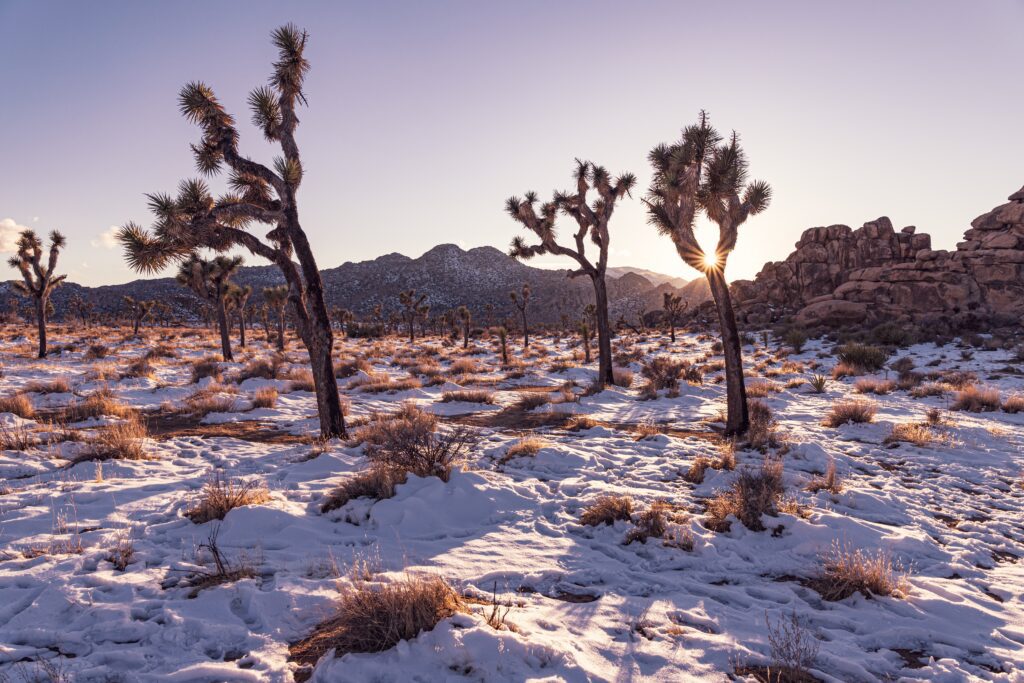
As winter begins, the weather gets even cooler in Joshua Tree. From December through February, the average temperatures during the day hover around the upper 50s and lower 60s. At night and in the early morning, you’ll need to bundle up, as the average low temperatures tend to be right around the mid 30s.
Be aware that, although it’s rare, it does occasionally snow in the winter. Personally, I think this is a pro of visiting during this time – seeing the desert landscape covered in snow is incredibly cool! You’re also most likely to run into some rain in the winter, but it is scarce.
Despite the colder weather, Joshua Tree is still a popular spot to visit in the winter, so don’t expect it to be completely deserted. In the 2021/2022 season, there were similar levels of crowds in the winter compared to the fall.
What to Keep in Mind When Planning a Winter Visit
The biggest thing to keep in mind when visiting in the winter is that the park tends to have peak levels of crowds during December, particularly around Christmas and New Year’s.
Just like with Thanksgiving, you’ll want to book any accommodations ASAP, and be prepared for longer lines when entering the park.
It’s also worth noting that there’s a free admission day on Martin Luther King Jr. Day, which is on the third Monday in January. While the crowds do calm down a bit in January after the holiday season, this is still a popular time for people to visit, especially since it’s a holiday weekend.
Summer in Joshua Tree: The Hottest Time to Visit (Spoiler: We Wouldn’t Recommend it!)
During the summer, the park sees far fewer visitors compared to other seasons – and for a good reason! While you may not have to deal with crazy crowds, you will have to withstand the unbearably hot desert heat.
From June to September, average temperatures during the day range from the mid 90s to over 100 degrees. For this reason alone, I’d highly recommend avoiding Joshua Tree during the summer.
In order to best experience the park, you’ll want to do plenty of hiking throughout the day. Doing this in the heat and in a largely unshaded area isn’t just uncomfortable – it’s also not safe!
That said, the one pro of visiting during the summer is that stargazing is particularly great during this time. The Milky Way is visible (especially in June and July), and in mid-August, you may be able to watch the Perseid meteor shower.
What to Keep in Mind When Planning a Summer Visit
If you are dead set on visiting Joshua Tree during the summer, I suggest doing more low-key activities in the town or at your hotel/house rental during the day, and exploring the park in the very early morning and later afternoon/early evening as it starts to cool down again.
The average low temperatures during the summer range from the mid 60s to low 70s, but note that it will still be hot as the sun is setting.
Of course, keep in mind that you’ll only be able to fit in so much during these limited time windows. You’ll be able to get in a short hike or two, see the sunset (and the sunrise if you get out early enough), and do some stargazing once the park is completely dark.
Put simply, if this is your first time in Joshua Tree, visiting during the summer isn’t going to be the best for fully experiencing the park.
If you’re planning on camping, I’d recommend arriving at the park in the late afternoon/early evening, and then leaving in the early morning before it gets too hot. Note that not all campgrounds are open during the summer. White Tank and Belle close during the summer, as do some sections of Indian Cove, Black Rock, and Cottonwood.
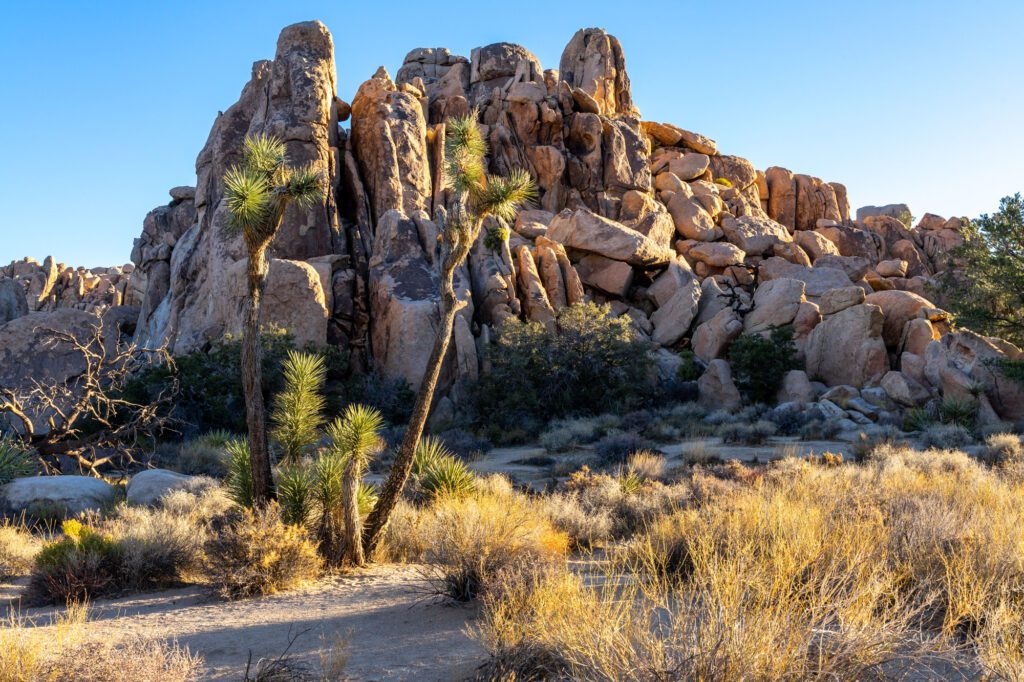
You Might Also Like
- JOSHUA TREE: How to Plan an Amazing Joshua Tree Itinerary
- JOSHUA TREE: A Day Trip to Joshua Tree (Complete Planning Guide)
- JOSHUA TREE: Where to Stay near Joshua Tree National Park
- JOSHUA TREE: 12 Stunning Hikes in Joshua Tree National Park
- PALM SPRINGS: How to Spend an Amazing Weekend in Palm Springs
- DEATH VALLEY: How to Plan an Incredible Death Valley Itinerary (3 Days)
